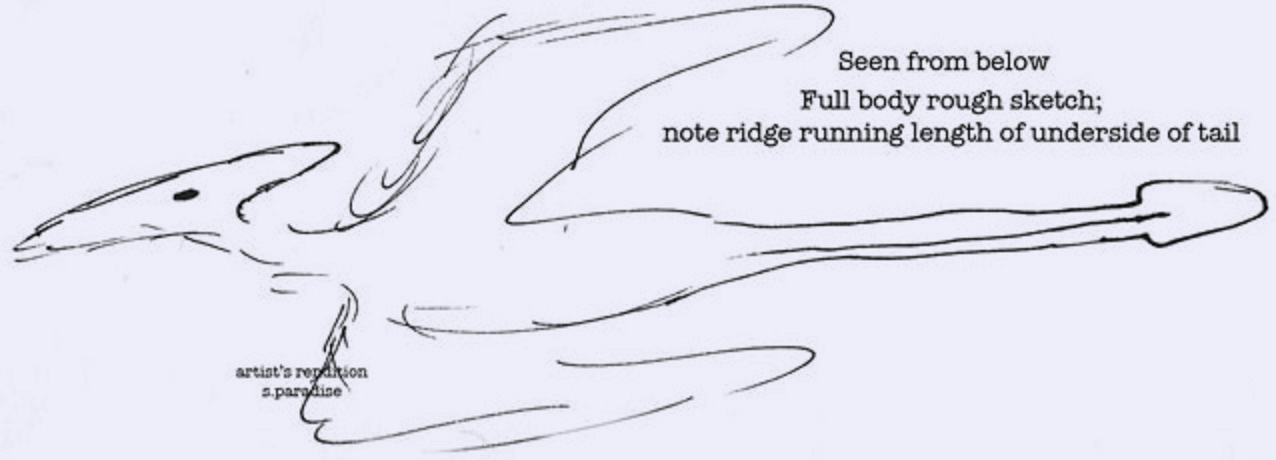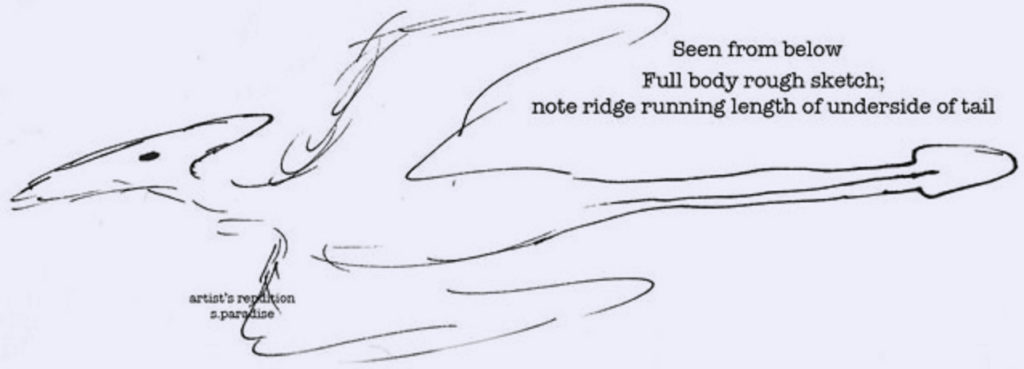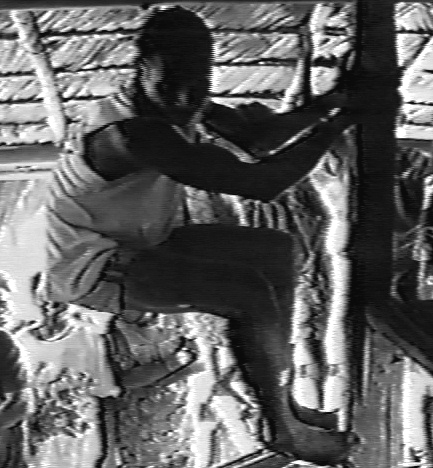By Jonathan David Whitcomb
This (PLP) is in two parts: the basic proclamation portion and a partial listing of sightings of apparent living pterosaurs, a list meant to complement a related online publication:
Declaration on Living Pterosaurs
DLP includes sighting reports from around the world, but with few details
The second part of PLP goes into more details, regarding encounters with apparent extant pterosaurs, compared with DLP, and there is limited overlapping of what sightings are covered. Here in PLP are more of the earlier reports that I, Jonathan Whitcomb, received in my earlier years of my investigation. (Most of these PLP sighting reports are not referred to in DLP.)
.
Proclamation on Living Pterosaurs (PLP)
November 20, 2017
I, Jonathan David Whitcomb, proclaim that not only are not all species of pterosaurs extinct but more than one species is living, and they range in extensive areas of the planet. During the past fifteen years, I have received reports of apparent living pterosaurs from six continents, most of which reports were directly from the eyewitnesses themselves.
I proclaim that the majority of the reports that I have received directly from eyewitnesses are from actual encounters with extant pterosaurs. Reports that come from misidentification or from mental-health issues or from hoaxes appear to make up only a fraction of these reports: less than 20%.
Most species of modern pterosaurs, if not all of them, appear to be nocturnal. Some of the daylight sightings people report seem to have been encounters with pterosaurs that ordinarily fly at night but were seen in the day because of a disturbance. These include the following:
- Storm or other severe weather conditions
- Noise such as teenagers shouting on the shore of a crater lake on Umboi Island
- Direct disturbance from a human
The third disturbance includes a person accidentally coming across a nest (British Columbia and Arizona) or a teenager throwing small rocks over a cliff (causing the animal to take flight in Arkansas) or loggers using loud tools to cut down trees on Umboi Island, Papua New Guinea.
The number of persons worldwide who have had some kind of encounter, during their human lifetimes, with an extant pterosaur is far greater than I imagined in the early years of my investigation. It now appears obvious that the absolute minimum number of such persons is seven million. More realistic is over 100 million, yet we need to keep in mind that the vast majority of these encounters were brief and at night, not nearly dramatic enough for the persons involved to have become convinced that it was anything other than a bird or bat or other common form of life.
I came to this conclusion, about millions of human encounters with living pterosaurs, in more recent years. After many eyewitness sighting reports came to me over many years, I realized that a minority of them included reference to others who had similar encounters, yet it was a significant minority. Some eyewitnesses tell a family member or friend about their sighting, and most of those other persons disbelieve it. Some of them, however, reply that they too have seen a “pterodactyl” or a “dragon” or a “flying dinosaur” or a “prehistoric bird.”
In addition, some eyewitnesses who tell family and friends about their encounter find that one or more of those who listen know somebody else who has had a similar sighting of a pterosaur. Even taking away the number of secondary reports that came from misidentification, hoax, and mental-health issues, many of those other sightings came from encounters with pterosaurs. This means that probably more than 1% of all humans have seen an obvious pterosaur.
I, Jonathan Whitcomb, have found that only a tiny fraction of American eyewitnesses ever report their encounters to cryptozoologists, as least as of mid-November of 2017. I have learned this from those sightings in which more than one eyewitness was present but only one of them had any desire to talk about what they had seen.
(This proclamation on living pterosaurs could also be called a “declaration” page, but that could cause it to be confused with the other online publication, the larger one on flying-creature.com)
.
Early morning sighting in Georgia (sketch by the eyewitness Sandra Paradise)
.
A few Sightings of Living Pterosaurs
With references (-)
Australia
Redcliffe area, just north of Brisbane (1)
A farm boy, about twelve years old, observed a strange creature sitting on the roof of a shed in the early 1990’s. Its height was similar to that of a large man, and it seemed to have bat wings.
Sunshine Coast (2)
A lady was driving with her thirteen-year-old daughter, at about 8:30 p.m.. “We heard it coming . . . the swoosh noise. It is a modern car, the windows were up, so that is a loud sound . . . wings were so big. Black bat leather like . . . One wing covered the car.”
.
Greece
Spetses (3)
Late one night a man heard what seemed to be a large animal under a bridge. Later something extremely large flew away from under that bridge. Of course this has limited value in itself, except that it may relate to many encounters reported from around the world: reports of huge
“pterodactyls” or “dragons.”
.
Indonesia area
Over the sea between Australia and Indonesia (4)
Two plane pilots reported to Jonathan Whitcomb the encounter they had with a possible living pterosaur. Both men agreed on that possibility before one of them phoned Whitcomb. The sighting was in June of 2008 over the sea between Indonesia and Australia.
.
Papua New Guinea
Umboi Island, near Bunsil Station (5)
Rex Yapi and several other native eyewitnesses, while in a banana boat off the southern coast of Umboi Island (Siasi) in mid-2009, in daylight saw the ropen while it was mostly submerged. The tail, however, was above the surface. Rex estimated the tail length: six or seven meters.
Gauru Village (6)
Paul Nation interviewed natives, in 1994, probably on Gauru Village, Umboi Island. Two men reported that a glowing creature flew into their camp. It clung onto the trunk of a tree (unlike how fruit bats hang upside down from branches). The native men imitated how it happened.
A native demonstrated to Paul Nation the flying creature’s posture
.
Philippines
Las Pinas (7)
An eyewitness saw a flying creature that reminded him of a bat. The wingspan, however, was much bigger, estimated at 4-6 meters (about 12-20 feet).
.
United States of America
California (8)
Near the University of California at Irvine, a man saw a flying creature that had no feathers. The tail was about half the total length of the animal, which total length was about the same as the width of Campus Drive, just north of the university; he could estimate it because the creature was flying so low over that road. Whitcomb later measured the road width: about thirty feet.
Georgia (9)
An eyewitness of two living pterosaurs seen on two different mornings said, “. . . you don’t have to go to New Guinea. Far as I can tell, you can sit on a hill outside the town where I live in the mornings and see them.” (Sandra Paradise, eyewitness)
Rhode Island, Bristol (10)
In October of 2001, a lady saw a “huge pterodactyl” and estimated its wingspan to be about fifteen feet. The flying creature circled her house several times, giving her a scare.
.
References:
1. Searching for Ropens and Finding God, fourth edition (sfrfg-4), paperback book, page 34
2. Live Pterosaurs in Australia and in Papua New Guinea (lpaupng), online pdf book, page 32
3. Probable pterosaur sighting on an island in Greece
4. sfrfg-4, pages 35-37
5. Umboi Island ropen sighting in 2009
6. Pterosaurs living in Papua New Guinea
7. Sightings of pterosaurs in the Philippines
8. Live Pterosaurs in America, third edition (LPA-3), paperback book, pages 17-19
9. sfrfg-4, pages 196-198
10. LPA-3, page 38





